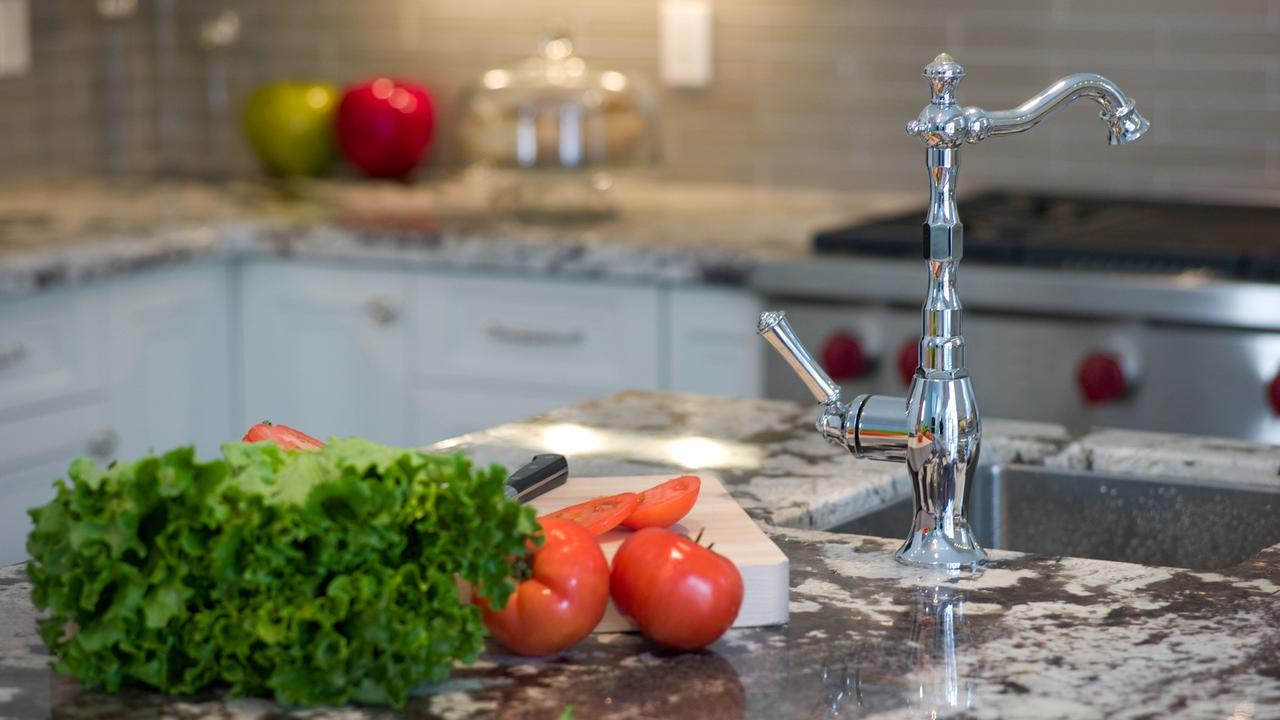Modern homes with less room to move
TO say Nick Ritar's family home is compact would be an understatement - it's just 32 sq metres, but it works.

LIKE most proud home owners, Nick Ritar is happy to give a tour of his new family home under construction. But while many people building their house from scratch opt for a structure of Grand Designs scale, Ritar chose the opposite.
To say the house is compact would be an understatement. Upstairs is the only bedroom, which Ritar will share with his wife, Kirsten Bradley, and their son, Ashar, 3. Ashar will sleep in a raised cubbyhouse and, by day, the queen-size bed will be folded up into the wall, allowing the 5m x 5m room to double as an office/playroom.
More: Small kitchen makeover ideas
The kitchen and living area occupy a similar size downstairs, with a two-metre wide bathroom off one side. With its leadlight windows, recycled 1930s French doors and countryside views, the house is beautiful. But it's - well, let's not mince words here - tiny.
Ritar and Bradley have the space to build a bigger home on their property in Mudgee, NSW, but they don't want to. "To make your home sustainable, it has to be small," says Ritar.
"It doesn't matter what you spend on environmentally friendly products - they all have an energy cost. If you build a giant home and whack dozens of solar panels on the roof, that doesn't make it sustainable."
But won't the family feel cramped? Ritar says no. The couple runs their own business, Milkwood Permaculture, teaching others how to create sustainable agricultural systems, so they spend a lot of time outdoors.
"At the moment we're living in an 1880s cottage, which is about 32 square metres," says Ritar. "We'll feel as if we have heaps of space when we move here."
Ritar is part of the backlash against the growing trend for palatial homes. Venture into most suburbs and you'll notice the walls of the McMansions graze those of their neighbours.
The average Aussie home is about 250 square metres, while the average homes in the US and the UK are about 200 and just 76 square metres, respectively. Which begs the question, is all that space necessary? Big homes cost a fortune to build, run and fill with stuff we don't really need.
This realisation persuaded former Triple J host Mel Bampton that, despite being a family of seven, a large house wasn't for them. A year ago, they lived in a six-bedroom, three-bathroom, two-living room home on the NSW North Coast. With three stepchildren aged seven, eight and 11, and two kids of her own aged six and 15, Bampton assumed space was essential to make the family dynamic work.
"But an hour would go by and we wouldn't hear from the kids," she says. "Instead of getting involved in each other's games, they were isolating themselves."
So Bampton and her partner, Shane, opted to downsize. "Now we have three bedrooms, one bathroom and an open-plan lounge/kitchen. The joy and interaction between the kids since we moved is phenomenal."
Undoubtedly, some parents wouldn't mind if their kids disappeared quietly into their rooms. And they'd shudder at Bampton's tales of queuing up for teeth brushing or her pragmatic "girls take priority" bathroom rule, sending the boys outside to fertilise the lemon tree. They may also recoil at the thought of having to listen to their kids' music or watch their favourite TV shows.
More: Small garden design ideas
But Bampton enjoys the compromises and insists the advantages of small-house living far outweigh the disadvantages. The new house is easier to clean, the kids feel safer in their shared bedrooms, power bills are reduced and there's a big garden, so there's still plenty of space to explore and play.
"We talk more, play games together and touch more - we're so close, we can't miss!" she laughs. "All these things make a big difference in the way we socialise.
"One night, Shane and I were making tacos, sharing a glass of wine, and the kids put on music and started teaching each other to breakdance. We joined in and, next thing, it was like a house party, all of us having an amazing time."
Bampton accepts things may change as the kids grow older. There's a caravan in the garden so her teenage daughter can have her own space. Bampton anticipates all the kids will end up having a spell there and she likes the idea they can explore their independence in relative safety, rather than wandering straight out into the world.
Rising costs of living mean Bampton and Ritar aren't the only ones shifting to smaller houses. Many families make the compromise in order to find a work/life balance, live in a desirable area or work part-time.
In the US, the Small House Movement, which promotes smaller housing alternatives, is gaining momentum and supporters believe it's not only in response to what we're doing to the environment, but what it's doing to us. Floods, earthquakes, tsunamis and bushfires have left many people homeless; small, sustainable houses make sense.
Downsizing could also be the solution for families in big cities struggling to find sufficient housing. Kerii Kell started thinking about changing the way she lived after seeing her grown-up children, Kristin, 28, and Ben, 26, struggle to pay rent.
Both were separated with shared custody of their children, so she began to investigate the benefits of pooling their resources and renting a home together. The children soon flourished with the support of their extended family, says Kell, and "despite some hiccups, we enjoyed each other's company".
After buying land on the Sunshine Coast, she thought she'd build one house to fit the whole family. But she soon realised it would be too expensive and they'd all still need their separate space.
Instead, the family turned to sustainable housing company Eco Cottages and purchased three 26 square metre homes, a waste water treatment plant, concrete driveway and carport pad, carport, 5000-litre water tank, cypress floors, rafters and furnishings and gas hot water system for a total cost of $199,000.
More: How to decorate with colour
The family turned one cottage into a communal living room and kitchen area, joining it to the other two-bedroom cottages by breezeway decks. Kristin and her sons, Jacob, 8, and Orian, 1, live in one cottage, while Ben shares the other with Kell. He has a bunk bed made of a queen-size bed for him
and a single for his daughter, Samara, 5.
Although they admit tidiness can be a challenge in such a small space, being together takes precedence. Kell recently underwent treatment for breast cancer and takes comfort in knowing that if her health fails again, her children will have a roof over their heads.
"My dream was to provide as much versatility as possible in the smallest practical space, to house myself and my family, and remain within budget," she says. "It's met all my expectations. I'd happily do it all again.



